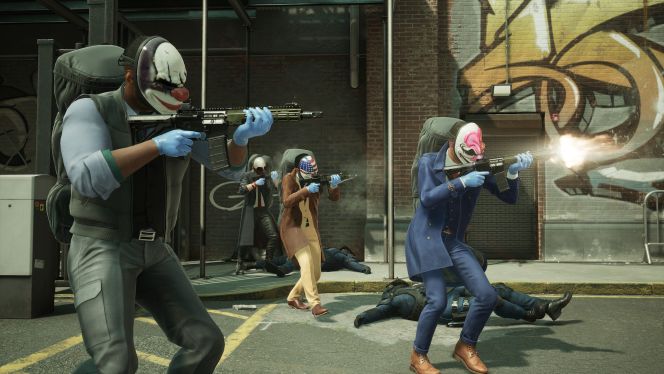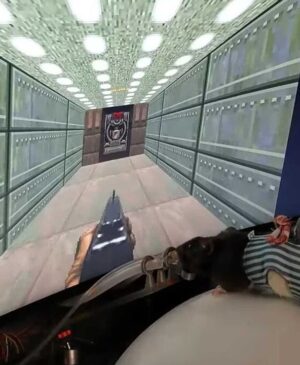REVIEW – Payday’s journey from its roots to its current incarnation has been a rollercoaster, with highs of innovation and occasional lows of over-expansion. The latest iteration is arguably the pinnacle of its form, but fans might ask, what’s missing? So, Payday 3 is the best the series has ever been, but where is the rest?
Payday’s inaugural entry was a masterstroke, presenting an innovative counter to the likes of Left 4 Dead. Swapping out legions of the undead for adrenaline-pumping co-op heist missions, it set a new bar. Then came Payday 2, which amplified this success, diversifying with numerous quick heists, dynamic weapon enhancements, skill evolutions, and an endless reservoir of fresh content.
But as Payday 2 neared its finale, it felt overly packed, perhaps even congested. The emphasis seemed to shift from delivering quality to mere volume, resulting in a game that, while robust at its core, appeared daunting for novices. This makes Payday 3 a curious mix: a commendable follow-up, yet somewhat lacking for those transitioning from its forerunner.
Let’s rob banks
Since its 2011 inception, Payday’s ethos has remained consistent: assemble a team of four criminals and engage in high-octane encounters with dynamically generated police units. It draws inspiration from Left 4 Dead, particularly in the use of an AI maestro that modulates the frequency of enemy engagements and special police encounters demanding collaborative strategies. But, unlike extended campaigns, Payday champions swift, intense bursts of action: execute a heist, make an exit, reset, and go again. Factor in player progression with diverse mission goals, and you’ve got Payday in a nutshell.
With Payday 3, several nuances enhance this familiar formula. Player movement feels rejuvenated, with actions like evasion slides and barrier leaps now playing pivotal roles in navigating or evading threats. There are moments of frustration – like when an apparently scalable ledge denies you – but the thrill of successfully dodging bullets by a hair’s breadth more than compensates.
Sneaky bastards
Stealth dynamics have seen significant refinement since Payday 2. Now, it’s feasible to wrap up every mission in Payday 3 under the radar, but this demands flawless team synchronization. One oversight, an overlooked security personnel, or a misjudged surveillance device, and your stealth facade crumbles, necessitating a more confrontational approach.
In Payday 3, areas are delineated by varying security grades. While public zones pose minimal risk, venturing into restricted or high-security zones triggers responses ranging from benign escorts out of the area to outright detainment, awaiting ally intervention. These interactions can be tactically exploited, such as diverting guard attention as a deliberate distraction. The revamped stealth feels organic and less prone to inexplicable breaches, which plagued its predecessor.
Character progression also receives a makeover. Gone are the perplexing slot-based upgrade mechanics of Payday 2, replaced by a more intuitive menu-driven system. As you climb the ranks, unlocking coveted enhancements becomes more straightforward. In this new system, you’re no longer making blind investments in abilities, but rather making informed decisions about character growth.
Missions are a treat
Payday 3’s heist missions are a treat. They ooze depth, offering more than the bite-sized experiences of Payday 2, packed with alternative strategies and contingency options. Some missions might not resonate with everyone – for instance, the nightclub setting can be a maze of confusion – but others, like a warehouse heist, foster inventive team division and coordination.
Yet, for all its brilliance, Payday 3 feels somewhat hollow. In contrast to Payday 2’s overflowing content reservoir, this sequel feels barren. Approaching it like a conventional FPS, you’d find the narrative wraps up rather quickly, even accounting for the intricate backstory slides that demand a comprehensive grasp of the Payday mythos. This brevity is felt even more acutely if you hoped for an expansive service game experience, with the omission of Crime.net making game discovery a chore, relegating players to repetitive mission cycles.
Collaborating with random allies is its own beast. Given its cooperative DNA, player-induced disruptions are par for the course. The pronounced emphasis on stealth and meticulous planning makes Payday a uniquely challenging title when at the mercy of the web’s unpredictability. It’s not uncommon for entire squads to abandon ship once the stealth facade is broken. Couple this with a lack of integrated voice communications and an unwieldy signal system, and stealth objectives often feel like insurmountable mountains.
Just a foundation
Currently, Payday 3 stands as a foundational piece. The core heist mechanics are in their prime, accentuated by improved player experiences, more nuanced level designs, and revamped stealth systems. This represents an evolution from Payday 2. Yet, making the switch feels like bidding adieu to years of accumulated content and experiences from the previous title. If you’re new or returning to the franchise, this might be your perfect entry point. But seasoned veterans may grapple with the stripped-back offering.
-BadSector-
Pro:
+ The redesigned player movement gives a fresh impetus to the game mechanics
+ Reworked stealth mechanics make the experience more sophisticated
+ Transparent and intuitive character development
Cons:
– The content is poorer compared to the previous parts
– Online cooperation with strangers is challenging
– Transparent and intuitive character development
Publisher: Starbreeze Studios
Developer: Overkill Software
Style: First Person Shooter, Heist
Release: Release: September 21, 2023.
Payday 3
Gameplay - 7.2
Graphics - 6.8
Story - 6.5
Music/Audio - 7.2
Hangulat - 8.3
7.2
GOOD
Brief Summary: Payday 3, while technically brilliant and showcasing refined gameplay mechanics, might feel scant in content, especially for veterans of the series. Newcomers, however, will find it a riveting experience.


















Leave a Reply